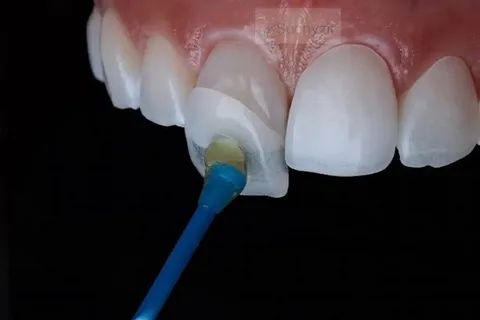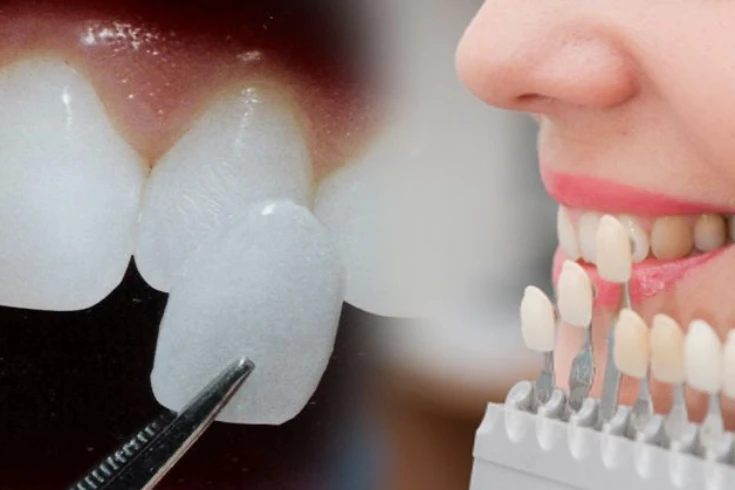Have you ever wondered, “How do I know if I need a root canal?” or “How to tell if you need a root canal?” If so, you have come to the right place. Dental health plays a crucial role in overall well-being. Sometimes, despite our best efforts, dental issues arise that require more intensive treatment.
A root canal is one such procedure, designed to treat infections at the center of a tooth. This treatment can save your tooth from extraction and alleviate significant discomfort.
Therefore, recognizing the signs and symptoms early can help ensure timely intervention and maintain dental health. Here’s an in-depth look at how to tell if you need a root canal.
Understanding Root Canals
Before diving into how to tell if you need a root canal, it’s important to understand what a root canal involves. Essentially, a root canal removes infected or damaged pulp from inside a tooth. The pulp contains nerves and blood vessels that provide nutrients and sensation to the tooth. When the pulp becomes infected or inflamed due to decay, cracks, or trauma, it can cause severe pain and may lead to abscesses or tooth loss if not treated promptly.
How do you know if you need a root canal? Signs and Symptoms
Persistent Pain of the tooth
Persistent tooth pain is one of the most telling signs. This pain can vary in intensity and may be constant or intermittent. Furthermore, it can spread to your jaw, face, or other teeth, making it difficult to pinpoint the exact source. Moreover, this pain often worsens over time, and typical pain relievers might not provide adequate relief.
- Location and Spread: The pain can localize or radiate to other areas of the mouth or face.
- Triggers: Chewing, touching the tooth, or exposure to temperature changes can trigger or exacerbate it.
Sensitivity to Hot and Cold
Heightened sensitivity to hot or cold foods and beverages is another common sign. Damaged or infected nerves inside the tooth may continue to send signals after the removal of hot or cold stimulus. Furthermore, this type of sensitivity is often more intense than normal and doesn’t resolve quickly.
- Duration: Sensitivity that lasts for more than a few seconds after the temperature change.
- Intensity: Sharp, lingering pain rather than mild discomfort.
Swollen Gums around the tooth
Swelling around a specific tooth can indicate an infection. A fistula, a small pimple-like bump, may develop on inflamed and tender swollen gums, making them appear red. This bump is an abscess, a pocket of pus that forms as the body tries to fight the infection. Consequently, abscesses can cause significant pain and may leak pus, resulting in a bad taste in your mouth.
How to tell if you need a root canal? Additional Signs and Considerations
While the above symptoms are the most common indicators, other factors and signs might suggest the need for a root canal:
- Pimple on Gums: A recurring pimple on the gums, which may drain pus.
- Tooth Mobility: A tooth that feels loose can be a sign of infection and bone loss.
- General Malaise: In some cases, dental infections can lead to generalized feelings of illness or fever.
How do I know if I need a root canal? Things you should do.
After you know, how do you know if you need a root canal? Now you need to know what to do if you suspect to need a root canal. We recommend scheduling a visit with a dentist promptly if you experience any of these symptoms. This is what you can expect during the visit:
Evaluation of tooth from the dentist
The dentist will conduct a thorough examination, including:
- Visual Inspection: Checking for visible signs of damage or infection.
- Palpation: Feeling the gums and surrounding areas for signs of swelling.
- Percussion: Gently tapping on the tooth to assess sensitivity to pressure.
- Thermal Testing: Testing the response to hot and cold stimuli.
Diagnostic Imaging of the tooth
Following this, X-rays or other imaging techniques will provide a detailed view of the tooth’s internal structure and identify the extent of decay or damage.
- X-rays: Detailed images to identify decay, damage, or infection.
- Advanced Imaging: In certain instances, professionals may utilize more advanced imaging techniques.
Diagnosis performed of the tooth
Based on the examination and imaging results, the dentist will determine whether a root canal is necessary. The reasons for recommending a root canal and the findings will be explained and discussed.
- Assessment: Determining the extent of pulp damage or infection.
- Recommendation: Explaining the necessity and benefits of a root canal.
Creation of Treatment Plan
The dentist will explain the procedure, what to expect, and schedule the treatment if a root canal is necessary. The root canal procedure typically involves:
- Local Anesthesia: Numbing the area around the affected tooth.
- Pulp Removal: Cleaning out the infected or damaged pulp.
- Cleaning and Disinfection: Thoroughly cleaning and disinfecting the inside of the tooth.
- Filling and Sealing: Filling the cleaned space with a biocompatible material and sealing the tooth.
- Restoration: Often, a crown is placed on the tooth to restore its function and appearance.
Preventive Measures and Aftercare for Root canal
Preventing the need for a root canal begins with good oral hygiene and regular dental check-ups. As you now know the question of how do you know if you need a root canal. You also get root canal, now you need to know the preventive measures. Here are some tips to maintain dental health.
Preventive Measures for Root Canal
- Regular Brushing and Flossing: Brush at least twice a day and floss daily to remove plaque and food particles.
- Routine Check-ups: Schedule regular dental check-ups and cleanings to detect and address issues early.
- Diet Considerations: Limit sugary foods and drinks and consume a balanced diet to support dental health.
- Protective Gear: Wear mouth guards during sports to prevent dental injuries.
Aftercare Measures for the procedure
If you undergo a root canal, proper aftercare is essential for recovery and long-term success:
- Follow Instructions: Adhere to the dentist’s post-procedure instructions.
- Pain Management: Use prescribed pain relievers as needed.
- Avoid Stress: Avoid chewing on hard foods or using the treated tooth for biting until fully healed.
- Maintain Hygiene: Keep up with good oral hygiene practices to prevent further issues.
Root canal treatment can save teeth with severe infection or damage. Therefore, recognizing the signs early and seeking timely dental care can help maintain oral health and alleviate discomfort. If you experience persistent pain, sensitivity, swelling, or other symptoms outlined above, don’t hesitate to contact your dentist. A root canal could be the solution to restoring dental health and peace of mind. Regular dental visits and good oral hygiene are key to preventing such issues and ensuring a healthy, pain-free smile.
Frequently Asked Questions
How do I know if I need a root canal?
Persistent tooth pain, sensitivity to hot or cold, swelling around the tooth, tooth discoloration (especially darkening), prolonged sensitivity to pressure, or a chipped or cracked tooth exposing the pulp are signs that you may need a root canal.
What are the signs that I might need a root canal?
Signs indicating a possible need for a root canal include severe or persistent tooth pain, lingering sensitivity to hot or cold, swollen gums with pus drainage, tooth discoloration, sensitivity to pressure, and visible damage such as chips or cracks.
What happens if I delay or avoid a root canal?
If a tooth infection is not treated with a root canal, it can worsen and potentially spread to other teeth or the jawbone. Consequently, this can lead to abscess formation and eventual tooth loss. Therefore, prompt treatment is crucial to save the tooth.
How is a root canal procedure performed?
During the procedure, the doctor uses local anesthesia to numb the area. Then, the infected pulp is removed. Next, the inside of the tooth is cleaned and disinfected. A crown is placed on the tooth and sealed with a biocompatible material to protect and restore its function.
How do you know if you need a root canal?
You might need a root canal if you experience severe, persistent tooth pain, prolonged sensitivity to hot or cold temperatures, tooth discoloration, swelling and tenderness in the surrounding gums, or a recurring pimple on the gums. Consequently, these symptoms suggest an infection or damage to the tooth’s pulp. Therefore, a dentist can confirm the need for a root canal through a clinical examination and X-rays.





